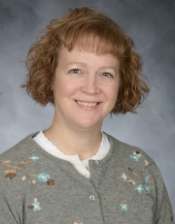Carter Sherman and Sierra Hieshetter already were aware of the importance of good land use planning and how what happens to the ground and water in one municipality can affect those adjacent.
Sierra’s family gets water from a well, and her uncle grows corn and wheat in the area. Carter’s father works for Kellogg Co., which gets flour from King Milling, one of just a few flour mills in the country that still uses water as a power source.
That importance became even more clear through an assignment all 300 or so eighth-graders at Lowell Middle School took part in before Spring Break.

As part of their study of water conservation, land use and human impact on their local environment and beyond, students working in groups of three to five were charged to create their own municipality. The activity was based on “Dragonfly Pond,” a project of United Growth for Kent County and Michigan State University Extension.
The catch was that each municipality was to be centered on a single, assigned focus, such as residential, business, industry, farmland, roads and highways or parks. Each plan had to include the others, however, and groups were charged with figuring out where to put the peripheral uses given their primary focus area.
With a common waterway running through every municipality, plans were joined and the impact of each map’s focus area on water quality was studied given the effects of upstream activities.

Not Just About People
“The kids tend to focus on the impact on people, and we try to steer them away from that to how the fish, the farms, the whole environment is impacted,” said science teacher Katie Wirsch. “It’s very eye-opening for them to look at how we’re using water, what we are putting in our water, and that we all play a role in that.”
Groups also presented pros and cons of their communities’ focus area. For example, Carter said parks are good for recreation and wildlife, and don’t contribute harmful runoff to streams, ponds and rivers like industry, business and residential can. But they also tie up land that could be used for those other uses, which could also affect jobs.
What did they learn?
“I learned that with any sort of (land use) there can be a lot of pollution,” Carter said.
Added Sierra: “And there’s no one way to make everyone happy when you have one body of water that connects through multiple towns with different lifestyles.”
CONNECT









